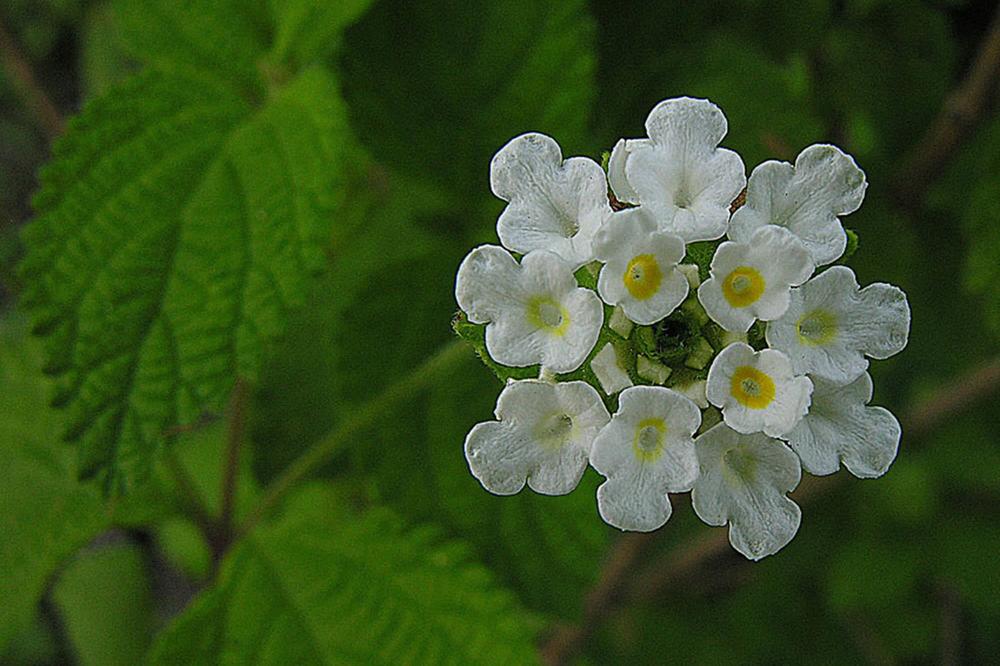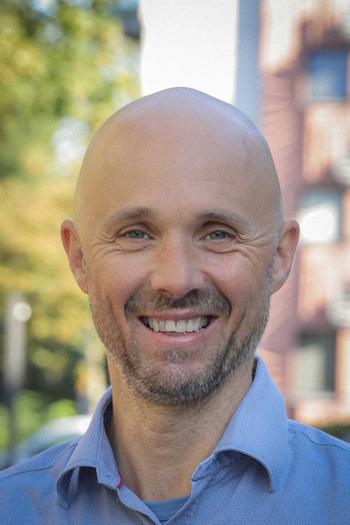Exploring the Medicinal Secrets of Plants
Researchers in a German-Brazilian project are investigating the efficacy of medicinal plants in Brazil. They want to find out if they can be used as ingredients for cosmetics and medicines.
Oct 31, 2025
Lippia graveolens, a Mexican oregano species whose essential oils have antibacterial properties.
Image Credit: Wikipedia / Dick Culbert Creative Commons
Every culture has traditional knowledge about the effects of local plants. One typical example is the use of willow bark extract in ancient times. Today we know that its fever-reducing and pain-relieving effects are due to the salicylic alcohols it contains, a kind of natural aspirin.
In central Brazil, in the state of Goiás, 320 families jointly manage a sustainable agriculture operation on 13,000 hectares. They include a group of women, the Guerreiras de Canudos (Warriors of Canudos) who utilize ancient knowledge to cultivate medicinal and aromatic plants used in making plant-based cosmetics, such as essential oils, that are then sold at local markets. Little was previously known about the anti-inflammatory effects of these ingredients, as the plants are largely endemic, meaning they occur only in this region.
Over the past three years, pharmacists led by Professor Alexander Weng of Freie Universität Berlin have studied five of these plants in detail. Researchers from the University of Wuppertal, the Brazilian Federal Universities of Goiás and São Paulo, and the Brazilian manufacturer Livealoe Cosméticos were also involved.
Samples from Brazil in Berlin
The project turned out to be more difficult than expected, partly due to language barriers and, above all, to bureaucratic hurdles. In the centrally located city of Goiás, the researchers’ English was not helpful for communicating with the authorities or with people in the countryside. Fortunately, Freie Universität has a liaison office in São Paulo, which has been headed by Christian Lazar for five years.
“I came to Rio de Janeiro for an exchange semester during my master’s degree program at the Latin American Institute of Freie Universität, and soon I didn’t want to leave,” Lazar explains. He supported the researchers and their partners through the complex approval processes and legal issues, and with his fluent Portuguese, he opened doors and helped overcome cultural barriers.
Even with his assistance, it took almost a year and a half for the first samples from Brazil to arrive at the laboratory in Berlin. Countless signatures were required to ensure that the project complied with the Nagoya Protocol. This international environmental agreement is intended to prevent Western industrialized countries from exploiting the genetic resources and biodiversity of other countries and to ensure that they share fairly in the research results. The procedure was so complicated that the Berlin researchers flew to Brazil themselves and collected the necessary documents and samples.
Together with their Brazilian colleagues, the pharmacists first selected the most promising medicinal plants, which were then cultivated by the “warriors.” At the federal universities extracts were produced from these plants, which were then studied using cell models in Berlin. As Weng explains, “We found individual preparations with anti-inflammatory effects, which Livealoe Cosméticos can now use to produce pharmacologically effective phytocosmetics.”
Alexander Weng is a professor of pharmaceutical biology at Freie Universität Berlin.
Image Credit: Mo Sayed
Fighting Germs
According to Weng, extracts from two plants in particular proved promising for medicinal purposes: One is Lippia origanoides, commonly known as Mexican oregano or wild oregano. He says its essential oil contains, among other things, the antimicrobial terpenes carvacrol and thymol.
Philipp Gabor, a researcher in the Pharmaceutical Biology research group at Freie Universität, adds that they inhibit the growth of Enterococcus faecium, Klebsiella pneumoniae, and Staphylococcus aureus, three typical hospital germs that are becoming increasingly resistant to antibiotics.
Another plant that is still being studied in more detail is Baccharis crispa of the daisy family. In addition to containing various flavonoids, it also contains special diterpenes that are connected with diverse biological activities.
The project was not funded by the German Federal Ministry of Research, as might be expected, but rather by the German Federal Ministry of Food and Agriculture because it focused on bioeconomy and renewable raw materials. The aim was to support not only pharmaceutical research, but also the development of rural areas in Brazil.
Participating in the project also indirectly helps the women’s cooperative. As demand for their products has increased, they can now grow far more crops, which in turn increases family income. Weng notes that it is also important for them because it is helping raise awareness of the Landless Workers’ Movement (Portuguese: Movimento dos Trabalhadores Rurais Sem Terra, MST) beyond Brazil.
Founded in 1984, the MST is one of the largest social movements in Brazil. It emerged from the struggles of peasant organizations that have existed since the beginning of the military dictatorship in 1964. Currently, forty-five percent of Brazil’s arable land is still owned by just one percent of the rural population.
Large landowners profit disproportionately from export revenues from soybean cultivation in vast monocultures and large-scale deforestation for cattle ranching, all the while causing massive damage to the environment and biodiversity. The MST advocates for agrarian reform, sustainable structural change, and a just and solidarity-based society. In the meantime, it is now Brazil’s largest rice producer.
The final symposium of the project took place in Wuppertal, Germany, this summer. The pharmacists at Freie Universität note that through this project, they not only gained professional knowledge, but also learned a great deal about South American bureaucracy. This helps set the stage for potential follow-up projects because Brazil’s flora and fauna potentially have a lot to offer pharmacy.
In conclusion, Weng says that he visited the largest snake collection in Brazil, which contains an immense treasure trove of biologically active substances. However, he is most interested in plants, such as the baru nut, a still uncultivated, wild tree nut species. Its kernels have a peanut-like flavor and are popularly believed to have various beneficial effects, for example, in stress regulation. A scientific study is still pending, so there is no shortage of ideas for new projects.
This article originally appeared in German in the Tagesspiegel newspaper supplement published by Freie Universität Berlin on October 11, 2025.


